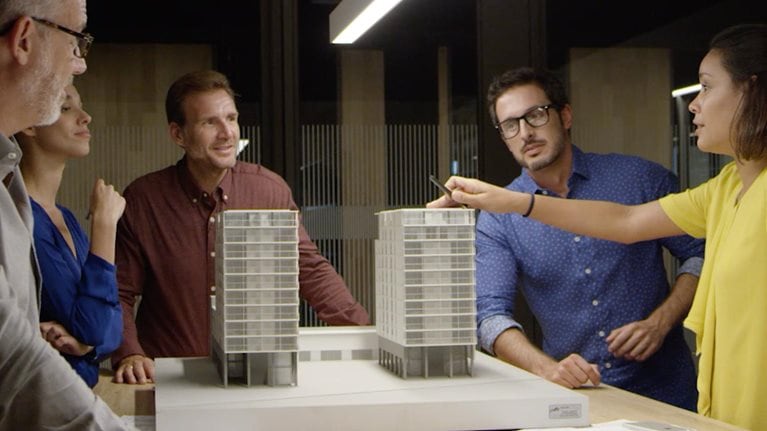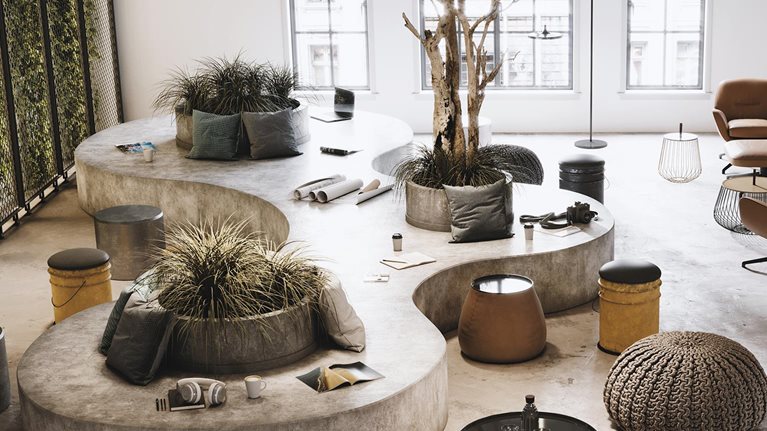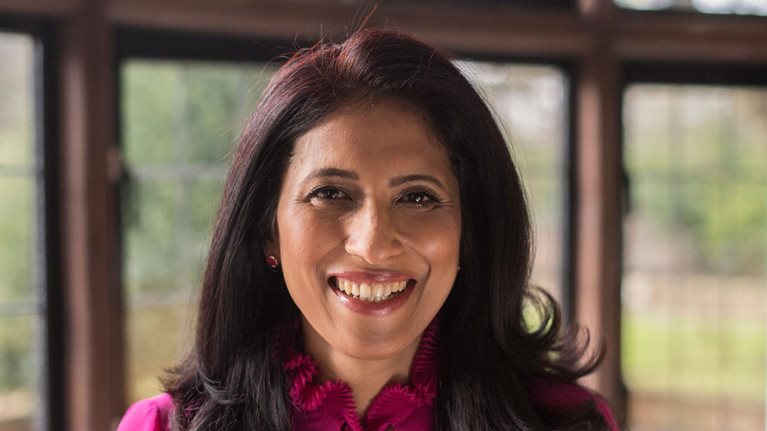Over the course of the pandemic, organizations have rapidly changed how they responded to both the health risks of COVID-19 and the impact of unprecedented workplace restrictions to safeguard employees from the virus. During the pandemic, about 42 percent of the US labor force—representing almost two-thirds of US economic activity—shifted to working from home.1 The stigma previously associated with remote-working models has largely ended, and some studies indicate that more flexible and remote-working options don’t necessarily diminish productivity2 and may actually give diverse kinds of talent more opportunities to thrive.3 When asked, most employees now want more flexible working models and would consider switching jobs to get them. As some offices now look to reopen, organizations face unprecedented challenges about how work is done, the role of the workplace, and what working model to adopt.
Diane Hoskins, co-CEO of Gensler, a global design and architecture firm, has been thinking about effective workplaces for decades and is now helping her clients navigate the next normal. Workspace designers are at the forefront of efforts to design and organize companies to optimize performance and safety for employees—not an easy task during the COVID-19 pandemic. Part visionaries and part practitioners, workspace designers analyze businesses and their workforces to uncover the underlying requirements for optimizing work and then design spaces that can meet those needs. In a conversation with McKinsey Real Estate Practice leader Aditya Sanghvi, Hoskins shares insights on how COVID-19 is disrupting workplace norms and accelerating trends for more human-centered approaches that can help organizations to emerge stronger after the pandemic. She also explains how the role of design is changing to address the new needs that organizations face. An edited excerpt of the conversation follows.
COVID-19’s impact on the role of the workplace
McKinsey: How did the COVID-19 pandemic disrupt the role of the workplace?
Diane Hoskins: In the span of the COVID-19 pandemic, we’ve had a profound shift. It has been an awakening of sorts. From a design standpoint, and maybe even from a broader consultancy standpoint, there’s now a conversation about what is the role of workplaces at the individual-worker level and not just at the company, industry, or world level.4 That is a very powerful shift. It opens the door to new solutions that may be unexpected.
Consider, if the big-five tech companies are somewhat of a surrogate for some of the most forward-thinking and heavily funded efforts around workplace pre-COVID-19, most workers may have said in the past, “I can do everything at work. The only thing I need to go home for is to sleep. I can work here, I can bring my dog here, I have day care here, I have exercise here, I have yoga here, I can get food here.” Today, that same worker might say, “I’m not sure why I ever have to go to the workplace, because I can do everything from home. Maybe I want to see my colleagues every now and then, and that might be the only reason I need to go in.” Maybe the idea of the megacampus will become a thing of the past or will evolve into something different. The question now is whether this shift is permanent and whether people can be satisfied and do their work at home or is there another solution.
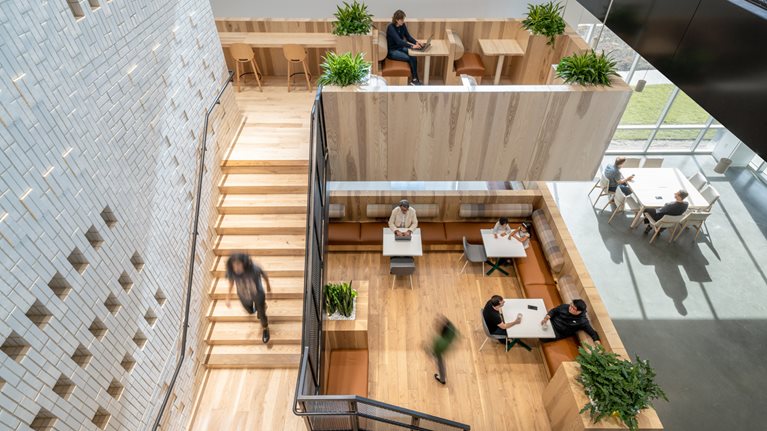
McKinsey: How much of what has changed during the pandemic been a reflection of something new or an acceleration and amplification of what was already in motion?
Diane Hoskins: We’ve seen, in so many arenas, that COVID-19 was an accelerant of long trend lines that were happening in the workplace. The idea of activity-based settings was born in the ’80s and was revolutionary at the time. It was the beginning of disconnecting the work and the place. The premise centered on going beyond just where you sit all day to all the places in the footprint of the office, in order to be more optimized to do great work and to maximize productivity and outcomes.
This was followed by an abundance of flexibility in the workplace in the ’90s. From a design standpoint, workspaces that could morph into another type of space, with furniture and tables on wheels, were introduced. New products came to market from big manufacturers that provided a kit of parts to build everything in a single workspace.5 For the first time, it was seamless and fast to create spaces of all sizes. That was driven further by the influence of the dot-com era.
In the 2000s, clients that we were working with started asking for ways to increase collaboration, communication, and innovation within the spaces in their workplaces. From a design standpoint, walls were taken down to increase transparency, and many middle-management offices were eliminated. Some executive-management offices remained, though many were now glass offices or had smaller footprints. After the recession of 2008, there was the rise of coworking and just-in-time office space, driven by the need to hedge risk and add speed. Technology adoption, from smartphones to internet access, allowed greater leverage to maximize the goals of increased flexible work spaces.
Even the current trend toward high-density, unassigned space in workspaces was already on the rise prepandemic. Over 13 percent of people, pre-COVID-19, were working regularly outside of the office,6 and the majority of that was in coworking spaces, at home, or other client spaces. The journey from using work stations to benching to unassigned space has led to a greater density of people assigned to an office area—a reduction from approximately 250 square feet per person in 1995 to 75 square feet or less per person in some environments today. The high-density trend has been reinforced by companies hesitant to invest further in more space as they manage risk, and some organizations are even downsizing as a consequence of COVID-19.
Read our latest research, articles, and reports on Real Estate on the changes that matter most for the challenges and opportunities ahead.
McKinsey: What impact has COVID-19 had on how workers feel about the workplace?
Diane Hoskins: For the decade before COVID-19, there was a worrying trend of dissatisfaction with the workplace among US workers across various sectors, including technology, financial services, and the public sector. It was probably more pronounced between the years 2013 to 2019.7 People were already struggling with the challenges of working from the office and working from home. In 2013, workers reported that the open-plan environment was diminishing the workplace experience for people because roughly 55 percent of office work requires focus work.8 More recent studies continue to question the value of open-plan offices. The distractions and noise in open-plan offices can intensify the stress that people experience, and research reveals that workers with unassigned office space are among the most dissatisfied in the workplace and the least effective.9
As more organizations implement unassigned work spaces, leading to greater densities in the workplace, that drives more dysfunction and reduces the ability of people to focus. Work from home may be, if not the solution, an outcry of some of the manifestations of the problem. The COVID-19 pandemic did not create the problem but may have accentuated one potential solution.10
McKinsey: How can companies begin to reinvent the workplace to better meet the evolving needs of people?
Diane Hoskins: The answer may be different for every company, but companies that want people to be present and to optimize outcomes can embrace a more people-centered approach. The workplace is a company’s operating system and can be a significant differentiator. The more the workplace is connected in a thoughtful way to the organizational strategies, leadership models, operational frameworks, and potential outcomes of a company, the stronger the workplace will emerge. The challenge is to invent a new approach and to design for a new reality, which at the beginning of the pandemic was more about a safe work environment and how you lay people out in six-foot separations but has now evolved to rethinking the entire landscape of workplaces and how people do work.
The more the workplace is connected in a thoughtful way to the organizational strategies, leadership models, operational frameworks, and potential outcomes of a company, the stronger the workplace will emerge.
At Gensler, we are learning in a quick-cycle way to bring together a client’s HR and operational leadership with its strategic vision and an eye to the competitive landscape. We are asking the important questions, like what is the future, how do we design for that future, and where are the interconnections? Ideally, you move through the process to create a model that is open and can be adjusted with every successive effort.
We work with a client’s senior-management team to optimize for business outcomes by optimizing for people. That’s what human-centered design is. It is designing with the intent of enabling people. It is not about putting the design before the human, but rather the design is for the human. The working models of the past are no longer good enough, and there’s an opportunity to rebuild the system to be better than what was done before COVID-19.
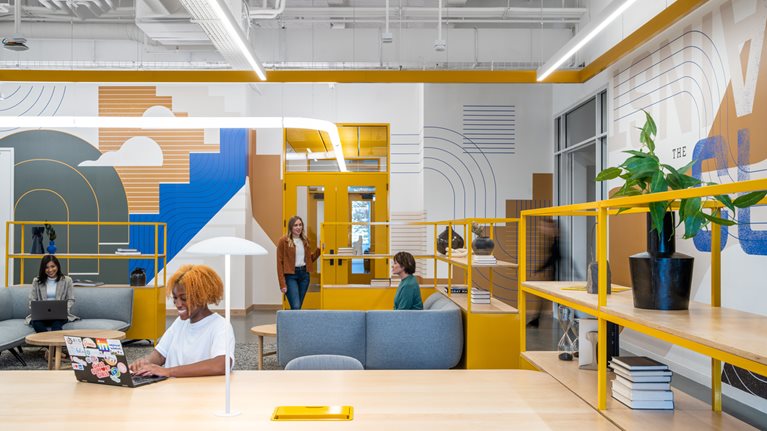
Gensler’s response to the COVID-19 crisis
McKinsey: How is Gensler as a firm evolving to meet the new working order?
Diane Hoskins: Much as we work with clients, we have a commitment to finding what hybrid working means for us by bringing together key stakeholders from across the company and considering how to prototype some ideas and how to beta test other ideas and then sharing those ideas regularly firmwide.
It is important to have frameworks that are flexible and that are geared toward the local community and the local situation. We try to surface new working models, identified at the local levels, that can be applied to other locations. Some of it is about empathy, like how office leaders are connecting with their people on a personal level and reconnecting to bring people back together.
As a firm we’re learning that it is important to keep an open mind, listen, and not overreact to anything.
McKinsey: How was Gensler able to stay inspired as a creative community during this difficult time?
Diane Hoskins: The flattening of the organization through COVID-19 was good for creativity. It’s counterintuitive in some ways because there is a belief that creativity is an outgrowth of in-person culture and collaboration. But often, creativity and ideas need alone time and focus time. And many workplaces today can be noisy and geared toward 90 percent collaboration and only 10 percent focus.
Our team went beyond where we were pre-COVID-19 and started having intense global efforts on various ideas and challenging the entire firm to help design for COVID-19 and inclusion. We had hundreds of submissions and saw unbelievable ideas coming from people in this new environment. We now want to make sure that we continue to have a platform where people can engage as individuals, be individuals, and share great ideas.
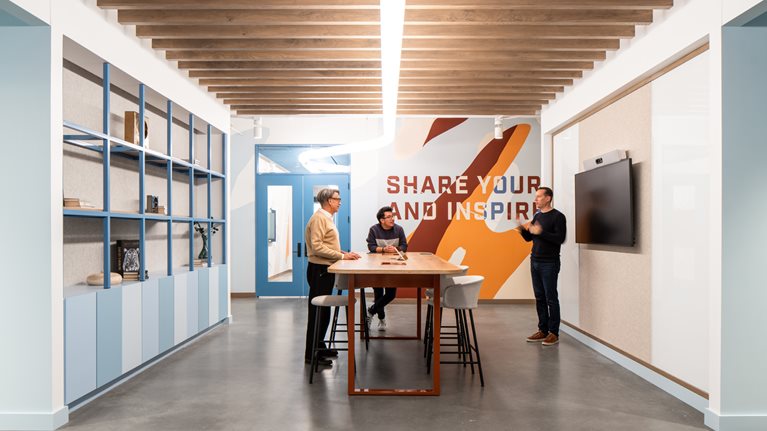
McKinsey: How is the design and architectural profession changing? Are there new skills or practices that are becoming more important?
Diane Hoskins: In the past, the architectural profession was more about precedent and a continued refinement of the elements to shape and create spaces, but the spaces that were created were very much the same. Today, what we’re designing and how we’re designing are evolving to meet the new challenges we’re facing, whether it be COVID-19, climate change, or the creation of new types of cities around the world.
What makes a great design professional is changing in two directions. The first is understanding how to use the digital and automated tool kits. When I became an architect, I was drawing every line and writing every word. Many of those things are now done by faster, computer-assisted tool kits that offer a finite number of options to choose from to make adjustments. The thinking behind what is the right space and what is the right building is more of what we bring to the table.
The second change is a more pronounced need for investigation and a typology of inquiry that is more like research at the outset of a project. There is a new way of talking about needs with a broader set of stakeholders emerging. Last year, we probably had more conversations with clients about research and did more research than in any other year as a firm, and we certainly see that continuing.
McKinsey: As a longtime CEO and now co-CEO of Gensler, how did the COVID-19 pandemic impact your leadership style?
Diane Hoskins: Every CEO was likely challenged during the pandemic to step outside of what was the norm into what the moment needed. I feel I’m a stronger leader than I was before COVID-19. Communicating in a crisis demands honesty and realness to share experiences that connect people together. Part of that is accepting being imperfect on or off screen. I spent more time listening and being more open to new ideas. There was also a newfound interest in sharing not just transactional information but also ideas and new approaches and more personal stories. I learned to step out of the safe zone and share my opinions more. I found a new voice I hadn’t used before or maybe had, but not enough.
The pandemic has also made me more passionate about design and how design could do more to keep people healthy and safe. For example, I realized, in the case of climate change—an area of focus for me prior to COVID-19—that we have to get out there more and talk about what matters if we are going to have the greatest impact on the industry and the world and our well-being. I have found I have a role to play in all of that. COVID-19 has shown me the importance of stepping into that space.
